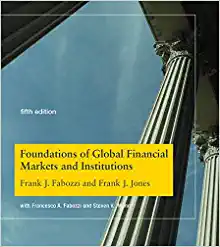Question
A global savings glut is a situation where the wanted savings exceeds the wanted investment. The global savings glut is also defined as a glut
A global savings glut is a situation where the wanted savings exceeds the wanted investment. The global savings glut is also defined as a glut of excess in intended savings or shortfall of investment intentions. This occurs when countries save more than they spend, which then leads to slower near-term economic growth. The global savings glut effects include trade deficit increasing, low interest rates, and saving decreased in the USA. Interest rates are proportions of loans charged as interest to the borrower; they are usually shown as a percentage of the loan outstanding. In the early 2000s, the interest rates were low, and economic growth slowed down. Professor John Taylor believed that the Federal Reserve kept interest rates low for too long. The Taylor rule that he created stated that the FED should lower rates when inflation is below the target level or when the gross domestic product is too slow. Therefore, when inflation is above target or gross domestic product growth is high, the rates should be raised. The Taylor rule formula suggests that the difference between a nominal interest rate and a real interest rate is inflation. The loanable fund market graph shows the interaction of borrowers and savers in the economy. It shows the relationship of what is being saved, and it shows the equilibrium when the interest rate is adjusted and the amount of borrowing because equal to the amount saved. The vertical axis shows the real interest rate, where the horizontal axis shows the number of loanable funds.
Do you agree with these statements? Why?
Step by Step Solution
There are 3 Steps involved in it
Step: 1

Get Instant Access to Expert-Tailored Solutions
See step-by-step solutions with expert insights and AI powered tools for academic success
Step: 2

Step: 3

Ace Your Homework with AI
Get the answers you need in no time with our AI-driven, step-by-step assistance
Get Started


